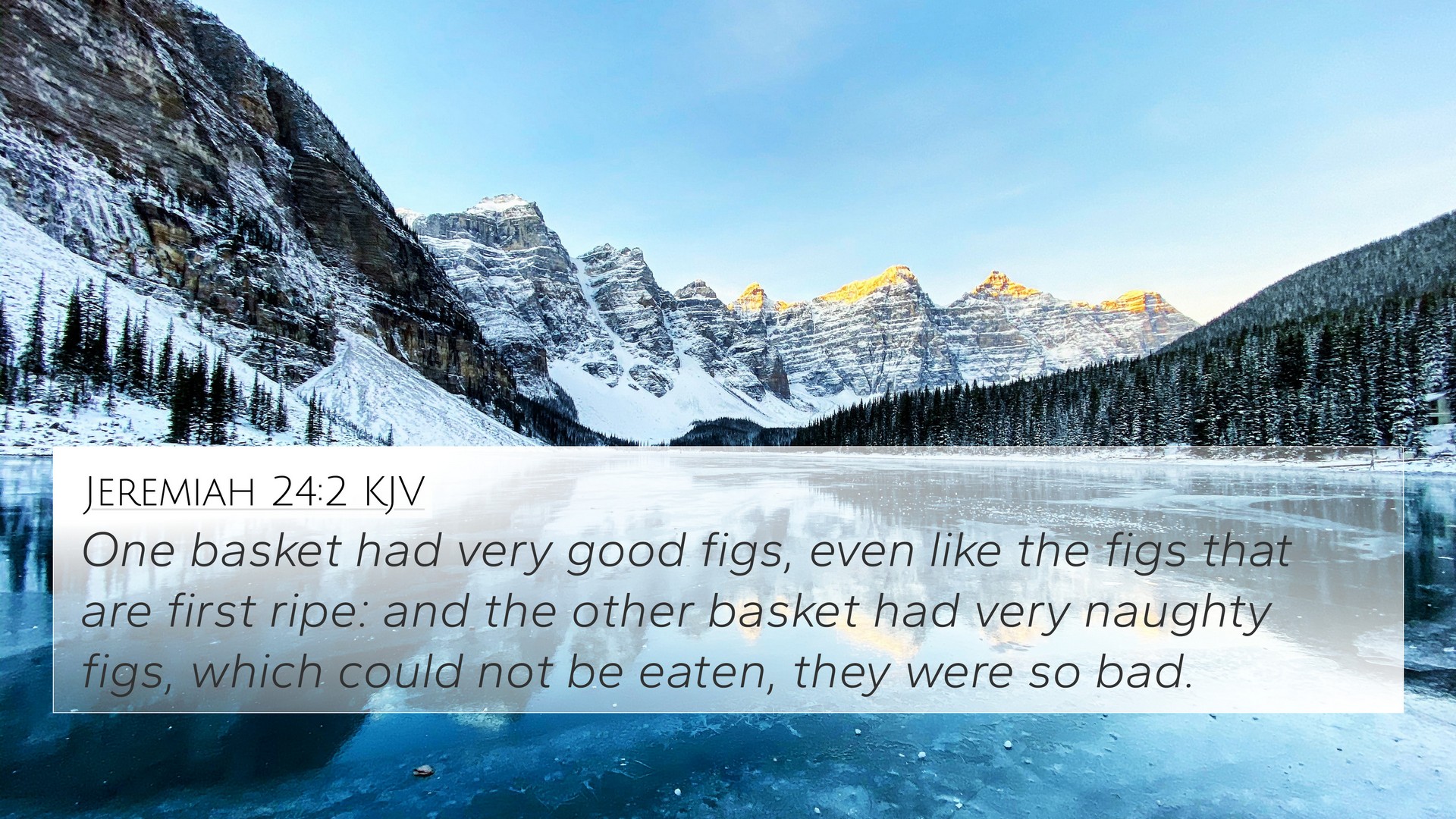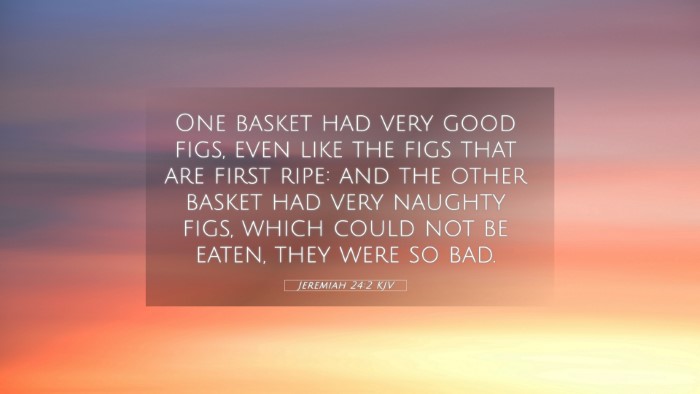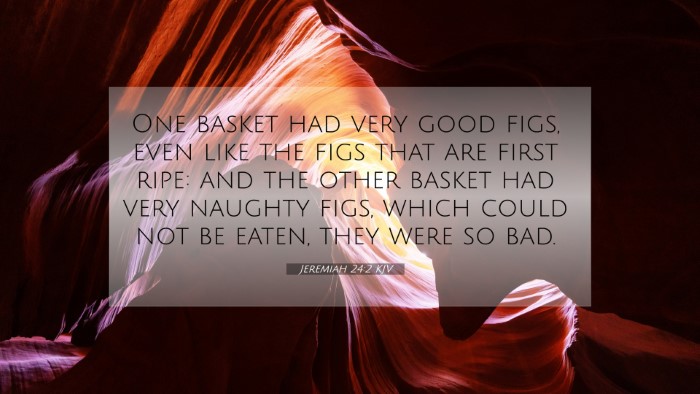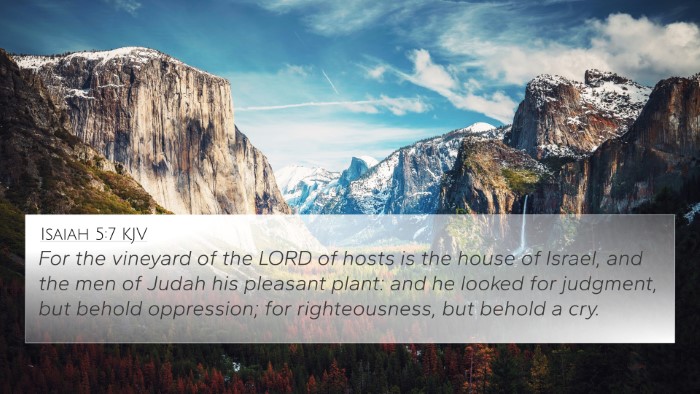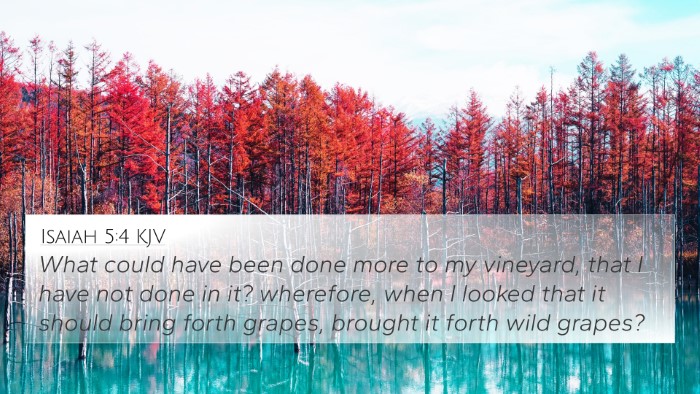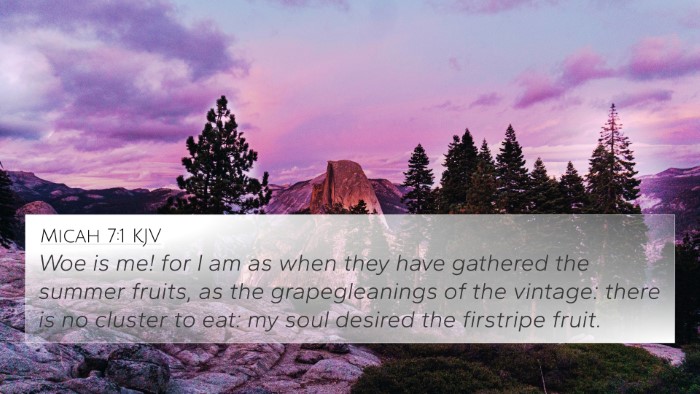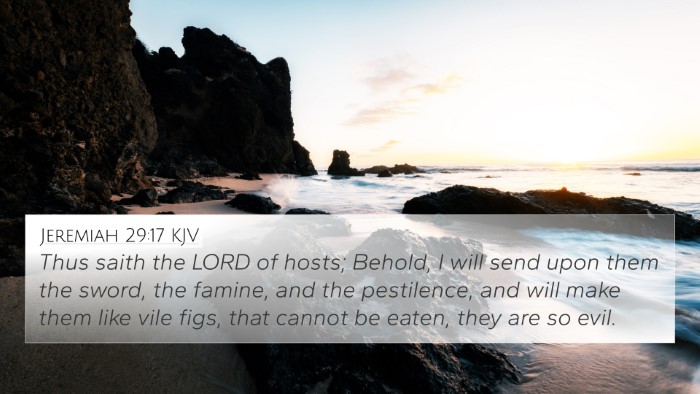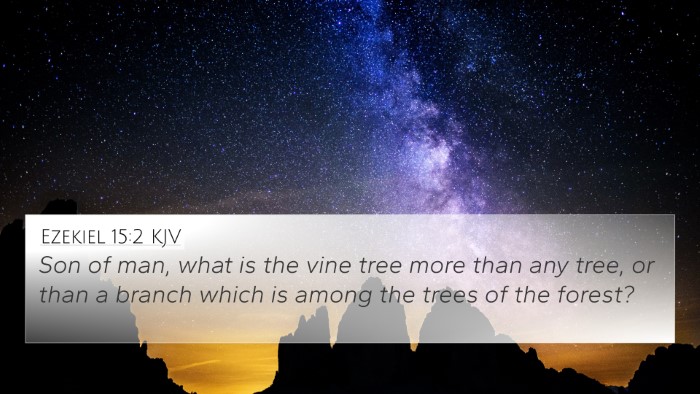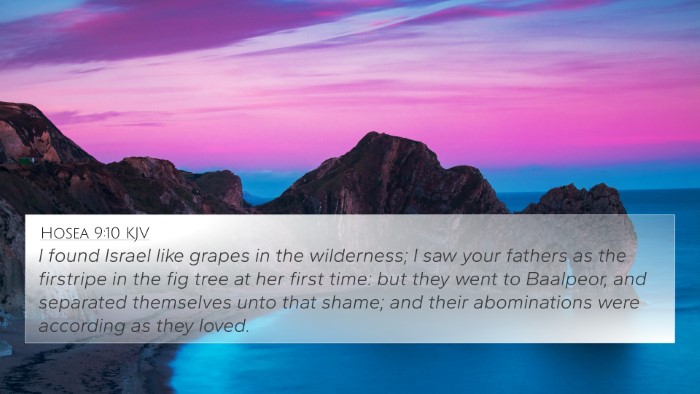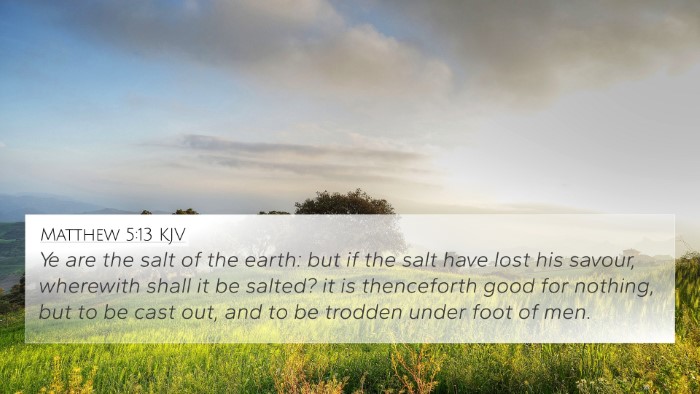Understanding Jeremiah 24:2
Verse: "The Lord showed me, and behold, two baskets of figs were set before the temple of the Lord, after that Nebuchadnezzar king of Babylon had carried away captive Jeconiah the son of Jehoiakim, king of Judah, and the princes of Judah, with the carpenters and smiths of Jerusalem, and had brought them to Babylon."
Summary and Interpretation
This verse provides a prophetic vision that Jeremiah received from the Lord, symbolizing the contrasting fates of the people of Judah. The imagery of two baskets of figs represents the divided condition of the exiles: one basket containing good figs and the other bad. This visual metaphor illustrates the distinction between those who would thrive in Babylon and those who would face destruction.
Commentary Insights
- Matthew Henry's Commentary:
Henry emphasizes the symbolism ingrained in the figs, suggesting that good figs indicate those chosen by God for preservation and return. In contrast, the bad figs signify those who would face judgment and despair. The focus is on God’s sovereignty and care, even in exile.
- Albert Barnes' Notes:
Barnes points out that the timing of this vision after the Babylonian captivity marks a crucial moment in Judah's history. He elaborates that the good figs symbolize God's people who remain faithful, while the bad figs represent those who rebelled and are destined for ruin.
- Adam Clarke's Commentary:
Clarke notes that this vision serves as a reassurance to the faithful remnant in Babylon, indicating God’s protection over them. He underscores that this passage is essential for understanding God’s promise of restoration to His people after a period of judgment.
Cross-References and Thematic Connections
Several Bible verses correlate with Jeremiah 24:2, enhancing understanding through inter-Biblical dialogue. Below are notable cross-references:
- Jeremiah 29:10-14: This passage discusses God’s promise of return and prosperity for the exiles after a set period.
- Ezekiel 11:16-17: God promises to gather His people from the nations, affirming His care during their exile.
- Isaiah 49:13: A call for the heavens to rejoice in God’s compassion towards His people during their trials.
- Lamentations 3:22-23: A reminder of God’s mercies that are new every morning, linking to the theme of hope amidst desolation.
- Romans 11:5: This New Testament reference illustrates the remnant chosen by grace, parallel to the good figs.
- James 1:12: This verse focuses on the blessings that await those who endure trials, resonating with the good figs’ resilience.
- Matthew 21:19: The withering of the fig tree symbolizes judgment, contrasting with the good figs in Jeremiah.
- Revelation 3:10: Assurance of protection for those who have endured trials, reflecting God’s faithfulness to His people.
- Galatians 6:9: Encouragement to not lose heart in doing good, resonating with the theme of faithfulness and reward.
- Philippians 1:6: Assurance of God's faithful work in the believers, paralleling the preservation of the good figs.
Conclusion
Jeremiah 24:2 serves as a poignant reminder of God's judgment and mercy. The verse’s imagery of figs encapsulates the hope that God holds for His people, highlighting the contrasts between faithfulness and rebellion. Through cross-referencing, we can connect these themes throughout the Bible, enhancing our understanding of God's intentions for those who trust in Him. Utilizing tools for cross-referencing, such as a Bible concordance or Bible cross-reference guide, can further aid in exploring these profound themes.
